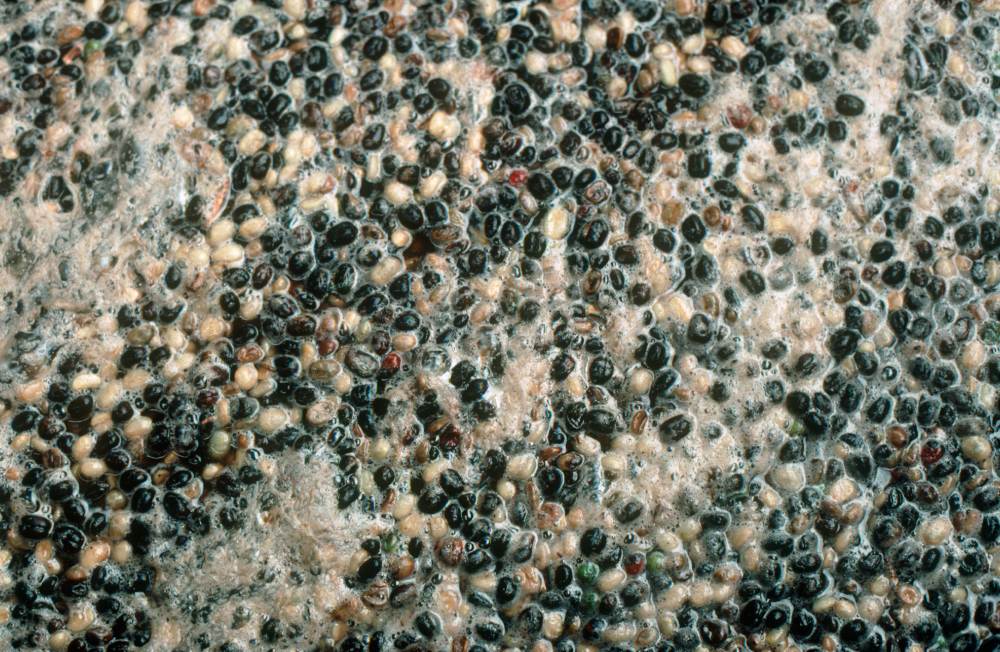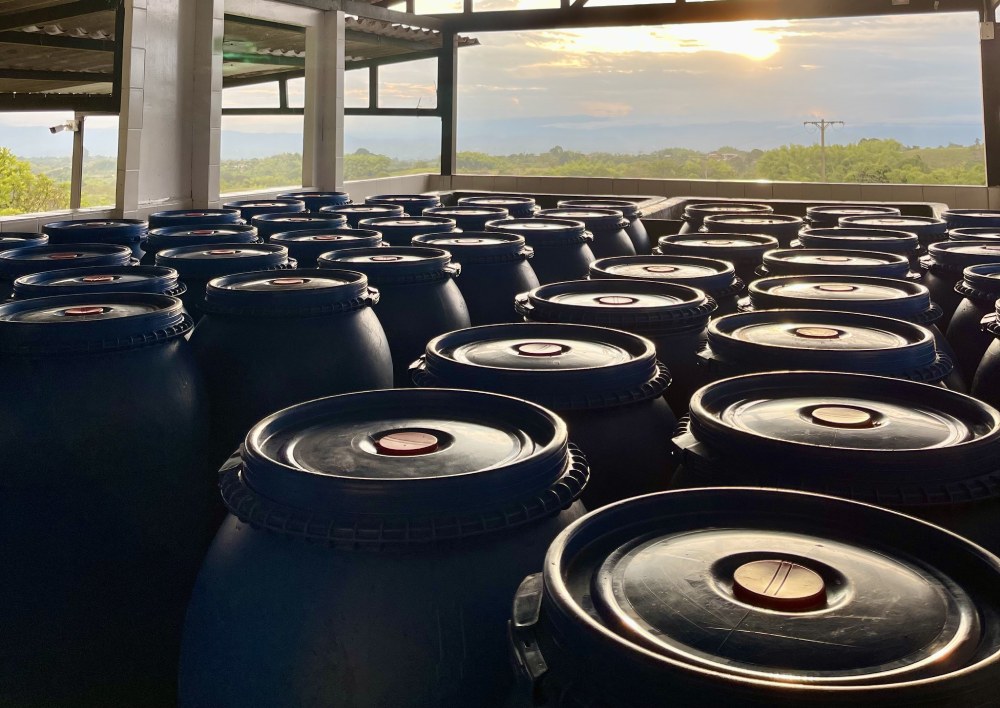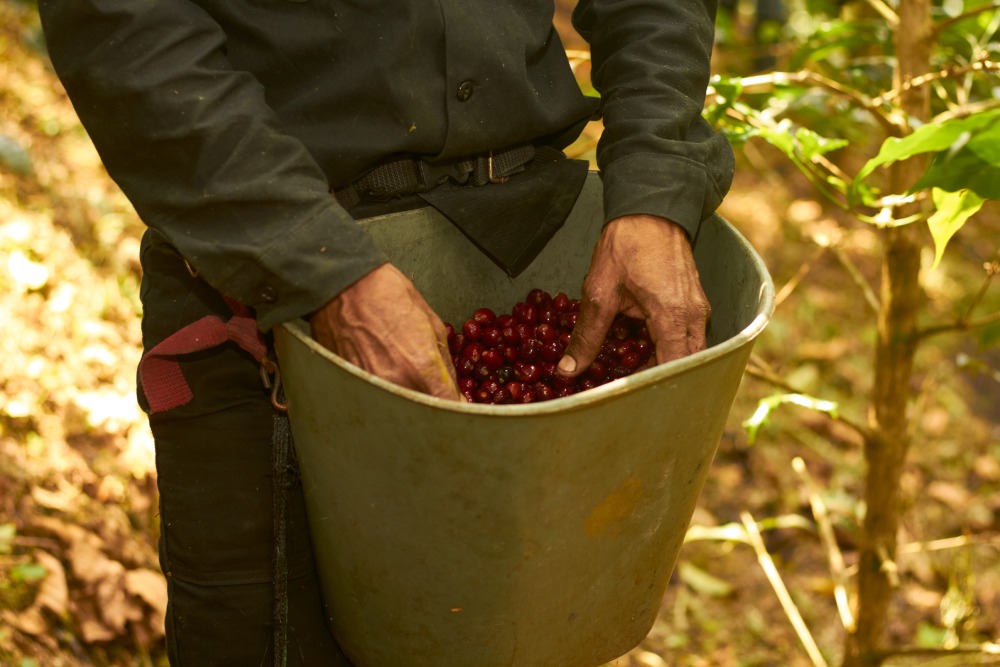Infused vs. co-fermented coffee: Is there a difference?

Specialty coffee’s obsession with experimental processing methods is hard to ignore. Over the past few years, the presence of more uniquely processed coffees has grown and grown. To a certain extent, it feels like techniques such as anaerobic fermentation or carbonic maceration have almost become a new standard in the industry.
With this rapid innovation in processing, however, has also been a much broader discussion about transparency – especially regarding how producers create new flavours in coffee. That brings us to a hot topic among many industry professionals and enthusiasts: flavoured and infused coffees. This is when producers purposefully introduce other ingredients when processing coffee so the green beans absorb or take on certain sensory attributes.
While some prefer the terms “flavoured” or “infused”, others opt for “co-fermented” – making it seem as though they are interchangeable, which can only add to confusion in some cases. So what are the differences, if any?
To find out, I spoke to Rodrigo Sánchez Valencia, owner of Aromas del Sur, and Vicente Mejia, founder of Clearpath Coffee – who both have extensive experience with infused and co-fermented coffees.
You may also like our article exploring whether there’s a difference between infused and flavoured specialty coffee.
Flavoured vs infused vs co-fermented coffee
Understanding the distinction between flavoured and infused coffees can be challenging, largely because there are no formal definitions. We therefore have to rely on the perspectives and opinions of coffee professionals.
In a previous article published in March 2023, Perfect Daily Grind interviewed Saša Šestić, founder of ONA Coffee and Project Origin, and Steven Restrepo, Head of Coffee at Café de Colita, to gain their insight.
Steven asserts that flavoured coffees are typically created through fermentation, as well as the addition of yeasts, bacteria, and artificial flavours. And while Saša believes that infusion can occur at any point along the supply chain, Steven disagrees – and states that he thinks you can only infuse coffees with artificial flavours after roasting.
So what about co-fermentation?
Looking at other resources, in a recent article, Ally Coffee explains that coffee is co-fermented in one of two ways: either by adding ingredients to the “mother culture” before processing, or by incorporating them directly with the coffee during fermentation. By this definition, co-fermented could be the same as flavoured or infused.
But it’s clear that not everyone agrees.
Rodrigo Sánchez Valencia is a third-generation producer and owner of Aromas del Sur in Huila, Colombia. He tells me he avoids using the term “infused” to describe co-fermented coffees altogether. From Rodrigo’s perspective, co-fermented coffees are more natural, and are therefore more preferable in comparison to infused coffees.
This is largely because he believes the term “infused” can imply artificial additives and flavours. Conversely, the flavours in co-fermented coffees are usually created during fermentation using exclusively natural ingredients, such as fruits or other microorganisms.
How do you co-ferment coffee?
Given the growing conversations around infused and flavoured coffees, let’s look more closely at the co-fermentation process.
Before experimenting with co-fermentation, Rodrigo says he explored the beer, wine, and dairy industries to learn more about fermentation and using certain microorganisms to create new flavours.
He tells me he soon realised how all three industries use the same basic microorganisms. For example, when fermenting beer and wine, manufacturers commonly use saccharomyces microbes.
Rodrigo says initial trials involved co-fermenting coffee with wheat and various fruits. He adjusted variables like total fermentation time, sugar content, and acidity to find the best possible balance. Over time, he was happy with the results.
“We chose the term ‘co-fermentation’ to transparently convey the unique combination of flavours created and the more natural process behind it,” he explains.
Essentially, the process involves several steps:
Firstly, Rodrigo ferments the “mother culture” for 190 hours. This mixture includes various microorganisms derived from coffee plants on his farm
Next, he feeds the mother culture a mixture of fruit juices, fruit, and a sweetener (such as molasses)
This mixture enhances inherent flavours in the coffee and increases the total sugar content – fuelling the fermentation process
Rodrigo then measures the sugar (or Brix) content of the cherries before adding them to a floatation tank to identify and remove lower-density beans
The cherries are then pulped and placed in a sealed tank with the mother culture for 180 hours
Following this co-fermentation period, the cherries are dried in direct sunlight for a few days, and then under shaded canopies until they reach a humidity level of 10% to 11%
Is there a market for these coffees?
While industry professionals and enthusiasts alike may not agree on how to formally define infused, flavoured, and co-fermented coffees, Rodrigo says there is increasing demand for them.
“We’re here to meet that demand and give our customers the one-of-a-kind coffee experiences they’re looking for,” he says.
However, producers still face certain challenges regarding these processing methods, including convincing roasters to try these coffees. Rodrigo explains that some roasters are hesitant to buy co-fermented and infused coffees, while others are more curious.
Vicente Mejia is the founder of Clearpath Coffee – a specialty coffee exporter in Colombia. He explains that even in an increasingly innovative specialty coffee sector, some believe that infusing or co-fermenting coffees isn’t always a good thing.
“Some refuse to even try the coffee or don’t want to offer it to their clients,” he says. “They argue that it doesn’t meet their standards of authenticity.”
He adds that Q graders and roasters – who often have years of training and well-developed palates – can sometimes feel that infused and co-fermented coffees lack depth.
“However, some seem to forget that it’s not them who will ultimately purchase and consume the coffee, but rather the everyday drinker who might enjoy trying coffee with flavour profiles that are easier to taste,” he explains.
Acknowledging the positive reception to these coffees
Consumers seem to be increasingly embracing co-fermented and infused coffees. Rodrigo says that buyers in Asian markets like Japan, Taiwan, China, Singapore, and Malaysia are showing the most interest. Additionally, co-fermented coffees have been well received in Arab markets like the United Arab Emirates, Kuwait, Qatar, and Saudi Arabia.
Vicente, meanwhile, says he’s received positive feedback from roasters who have taken the “leap of faith”.
“Co-fermented coffees can provide a fun tasting experience for end consumers, allowing them to appreciate the nuances of flavour and learn about the fermentation process,” he says. “This is especially beneficial for those who may not have extensive training or knowledge in coffee, as it offers a more accessible option for trying something new and special.”
How can transparency contribute to success?
Following growing positive reception, infused and co-fermented coffees are certainly one way to drive innovation at the heart of specialty coffee.
Vicente, however, emphasises that if producers and roasters want to be successful selling these coffees, the process must be transparent. For example, issues can arise if producers and roasters fail to disclose how the coffees are processed.
“They might say they are achieving these flavour profiles with more traditional processing techniques and new technologies,” he argues. “This is dishonest and creates a number of problems.”
Ultimately, transparency and traceability – two factors that are more important to specialty coffee consumers than ever before – are essential to marketing and selling infused and co-fermented coffees.
What’s more, inconsistencies in how we as an industry describe these coffees can further complicate matters – causing confusion or even misinterpretation. And although we’re still not close to formally defining infused or co-fermented coffees, being careful and mindful about the language we use is important.
In summary, there are differences between infused and co-fermented coffees. However, it all still seems subjective and very much based on different opinions, albeit from qualified professionals.
Establishing universal terminology is one way to dispel any confusion about the differences between flavoured, infused, and co-fermented coffees. But who gets to define these terms in the first place? That is the ultimate question – and it’s essential that we prioritise producers’ perspectives.
Enjoyed this? Then read our article answering some common questions about infused coffee.
Perfect Daily Grind
Want to read more articles like this? Sign up for our newsletter!
The post Infused vs. co-fermented coffee: Is there a difference? appeared first on Perfect Daily Grind.





Responses